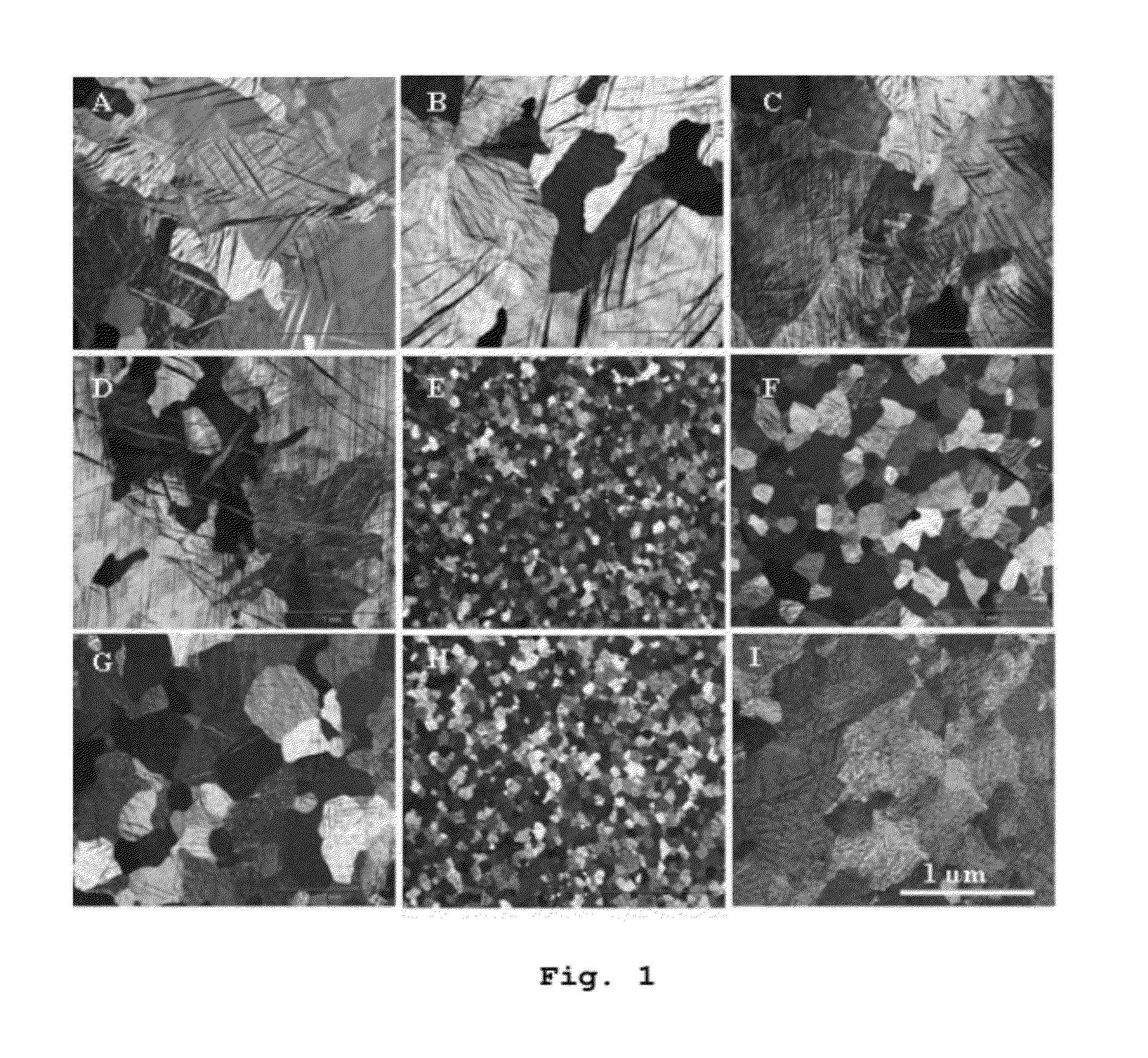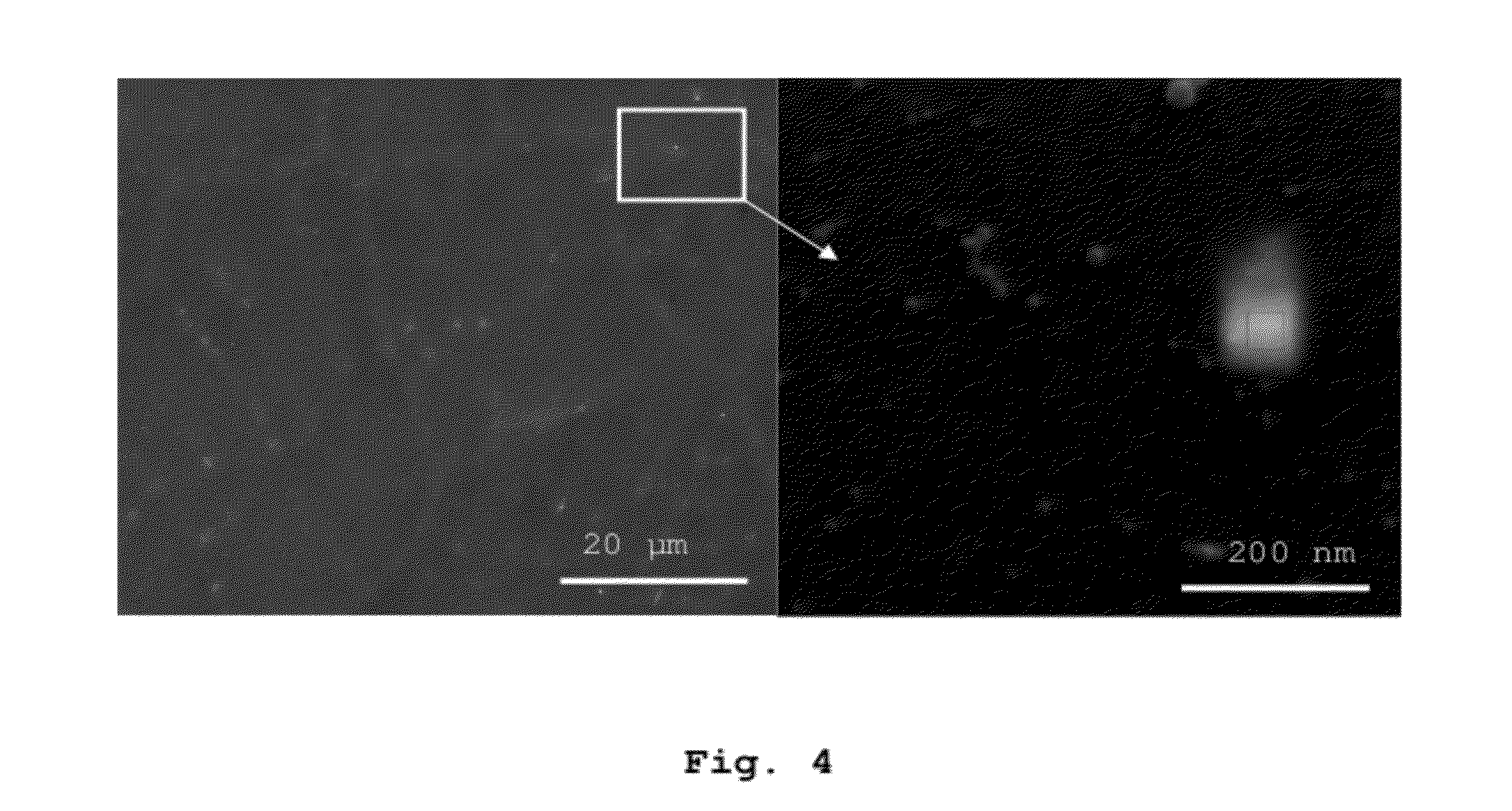Single-phase solid solution cast or wrought magnesium alloys
a single-phase, magnesium alloy technology, applied in the field of single-phase solid solution cast or wrought single-phase magnesium alloys, can solve the problems of preventing widespread application of magnesium alloys, low ductility and toughness at low temperatures, and not widely accepted magnesium alloys by car manufacturers
- Summary
- Abstract
- Description
- Claims
- Application Information
AI Technical Summary
Benefits of technology
Problems solved by technology
Method used
Image
Examples
examples
[0027]Three rare earth elements gadolinium, yttrium, dysprosium with high solubility in magnesium were selected to develop the single-phase solid solution magnesium alloys. Table 1 lists the compositions of the investigated alloys. A conventional alloy, Mg-3Al-1Zn (AZ31), was included for comparison.
[0028]All alloys were prepared by zone solidification. Their optical microstructures are shown in FIG. 1. The average grain size decreases with the increment in the content of rare earths. Compared to the gadolinium and dysprosium, the yttrium element is the most effective element to decrease the grain size. The average grain sizes of E and H alloys containing zirconium are 55 μm and 67 μm. The average grain size of Mg-3Al-1Zn (AZ31 is 480 μm.
TABLE 1Nominal compositions of the investigated alloys(Composition (weight percent, wt. %)AlloysMgGdYDyZnAlZrCaA—Pure Mg100——————B—Mg0.4Y Bal*—0.4————C—Mg0.4Gd0.4 YBal0.40.4————D—Mg0.4Gd0.4 Y0.4DyBal0.40.40.4———E—Mg0.4Gd0.4Y0.4DyO.2ZrBal0.40.40.4——0...
PUM
| Property | Measurement | Unit |
|---|---|---|
| eutectic temperature | aaaaa | aaaaa |
| eutectic temperature | aaaaa | aaaaa |
| temperatures | aaaaa | aaaaa |
Abstract
Description
Claims
Application Information
 Login to View More
Login to View More - R&D
- Intellectual Property
- Life Sciences
- Materials
- Tech Scout
- Unparalleled Data Quality
- Higher Quality Content
- 60% Fewer Hallucinations
Browse by: Latest US Patents, China's latest patents, Technical Efficacy Thesaurus, Application Domain, Technology Topic, Popular Technical Reports.
© 2025 PatSnap. All rights reserved.Legal|Privacy policy|Modern Slavery Act Transparency Statement|Sitemap|About US| Contact US: help@patsnap.com



